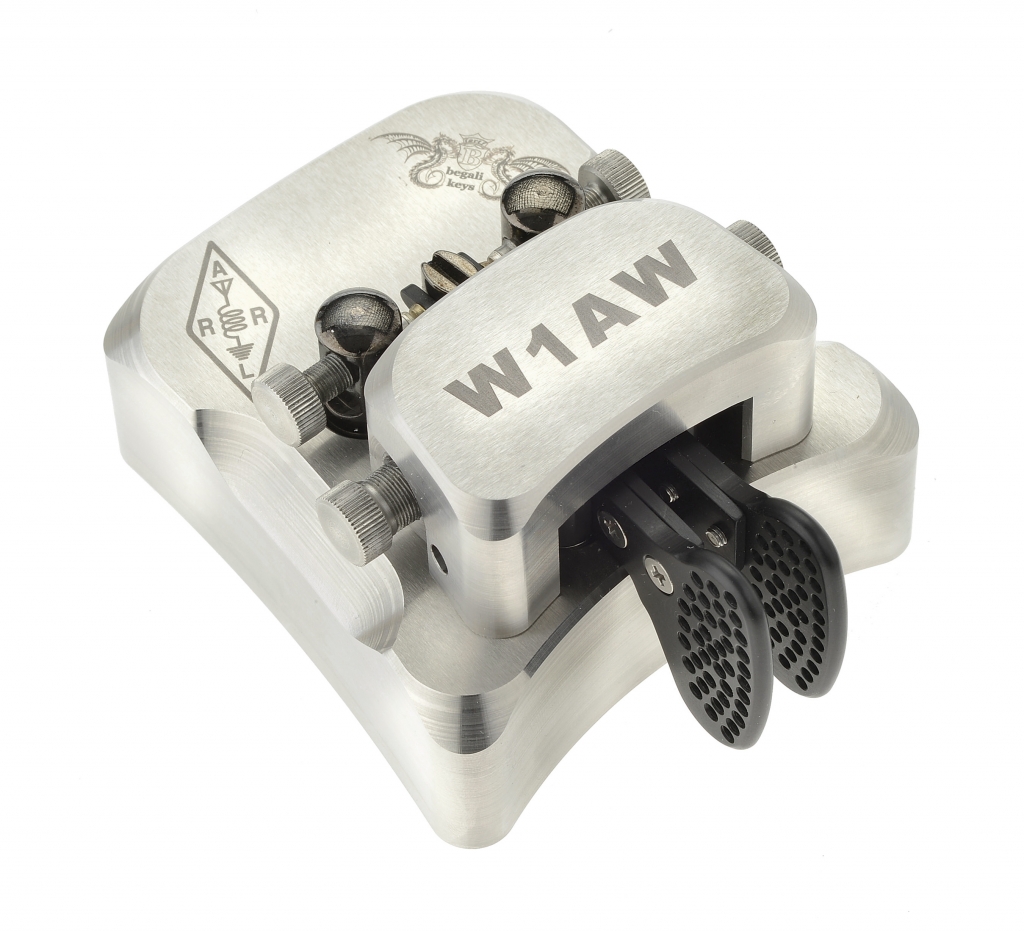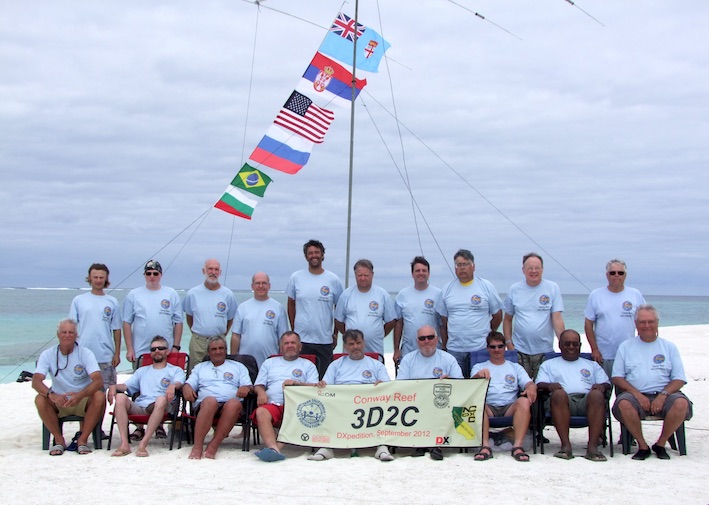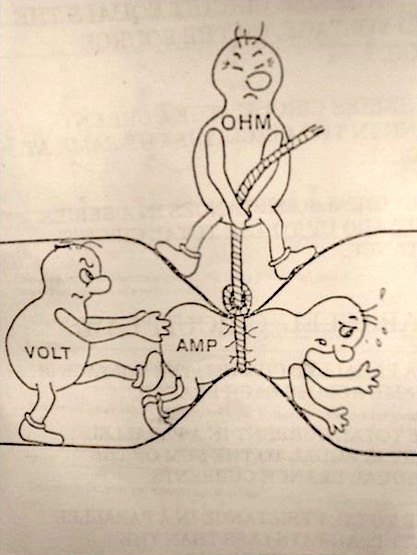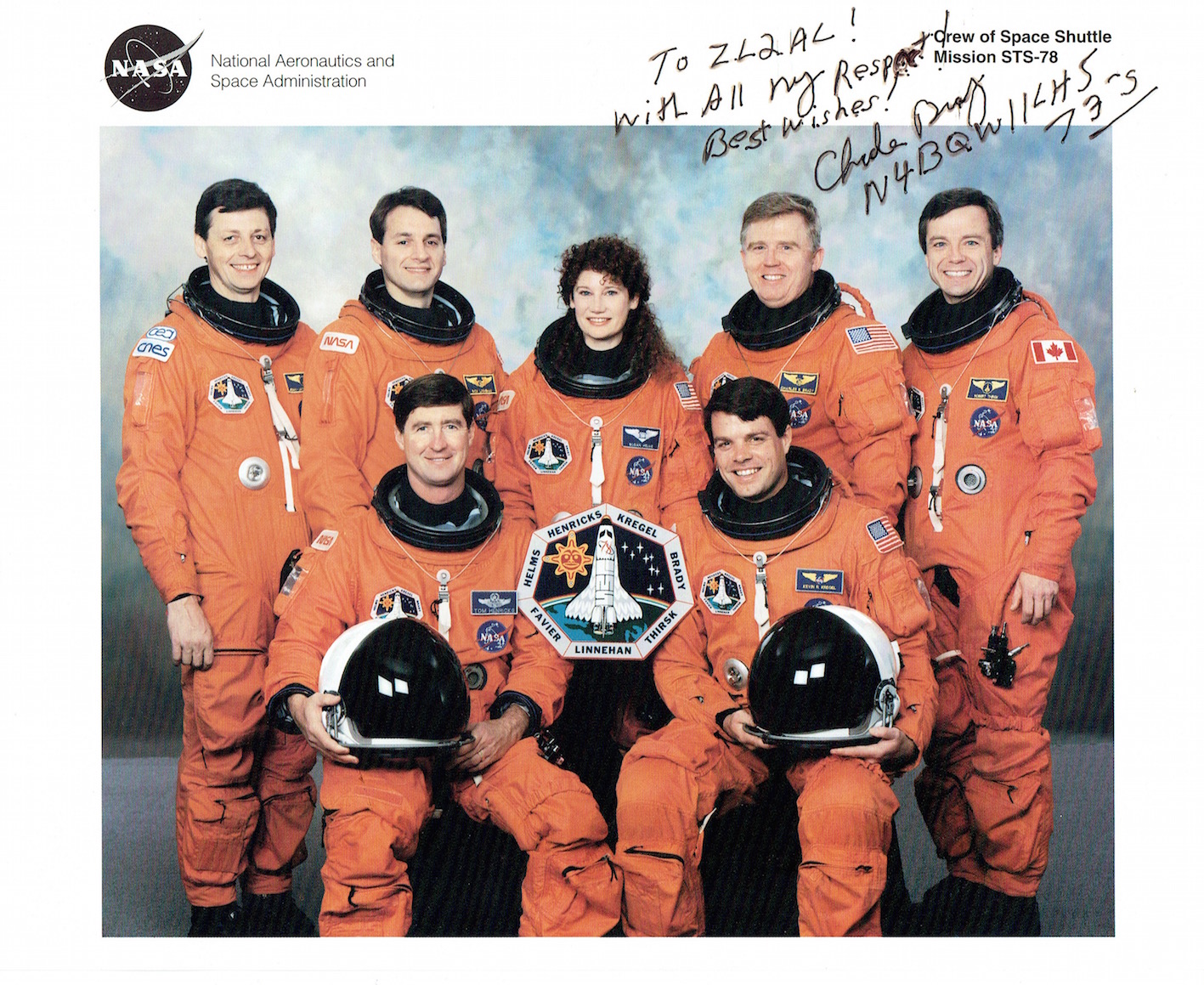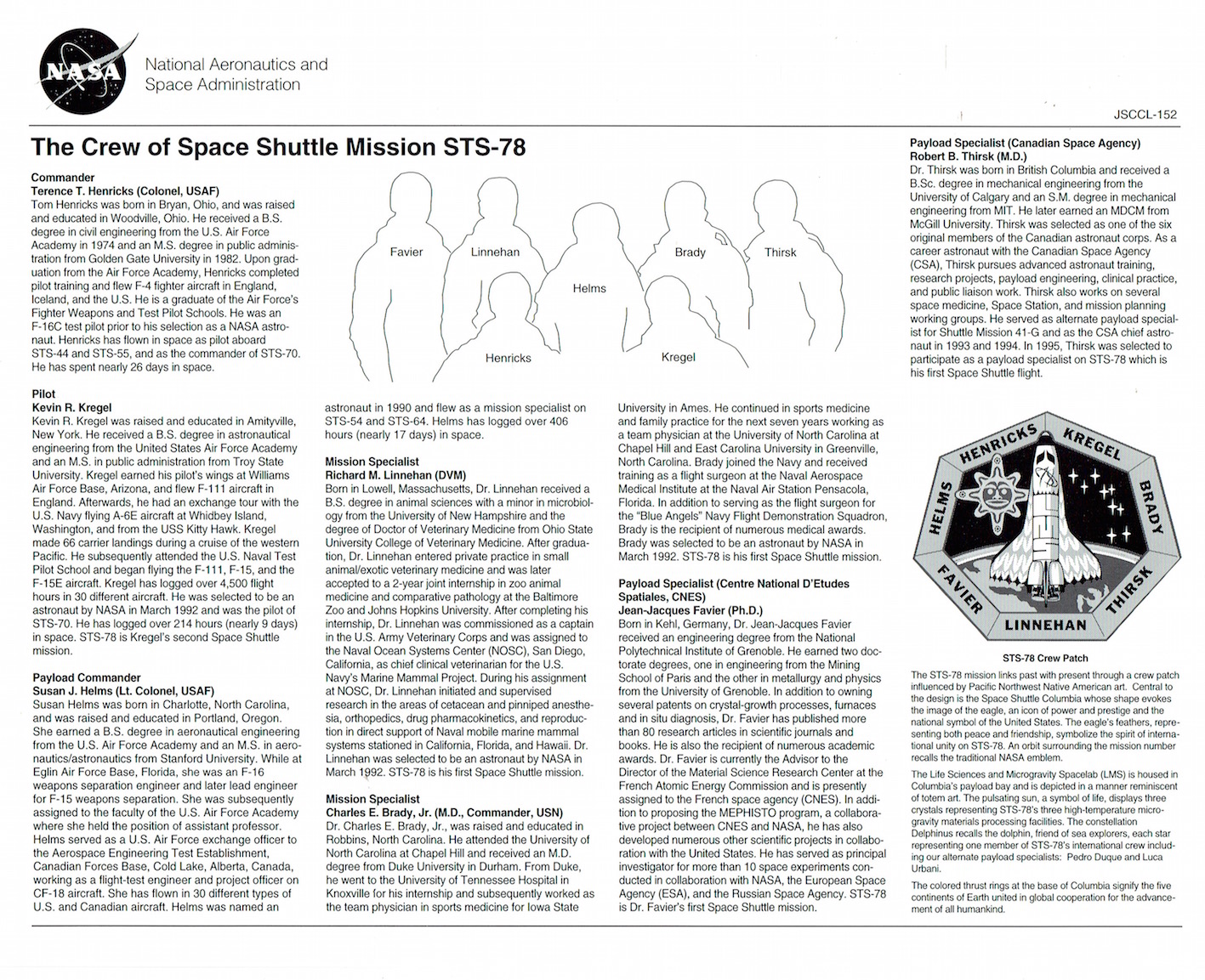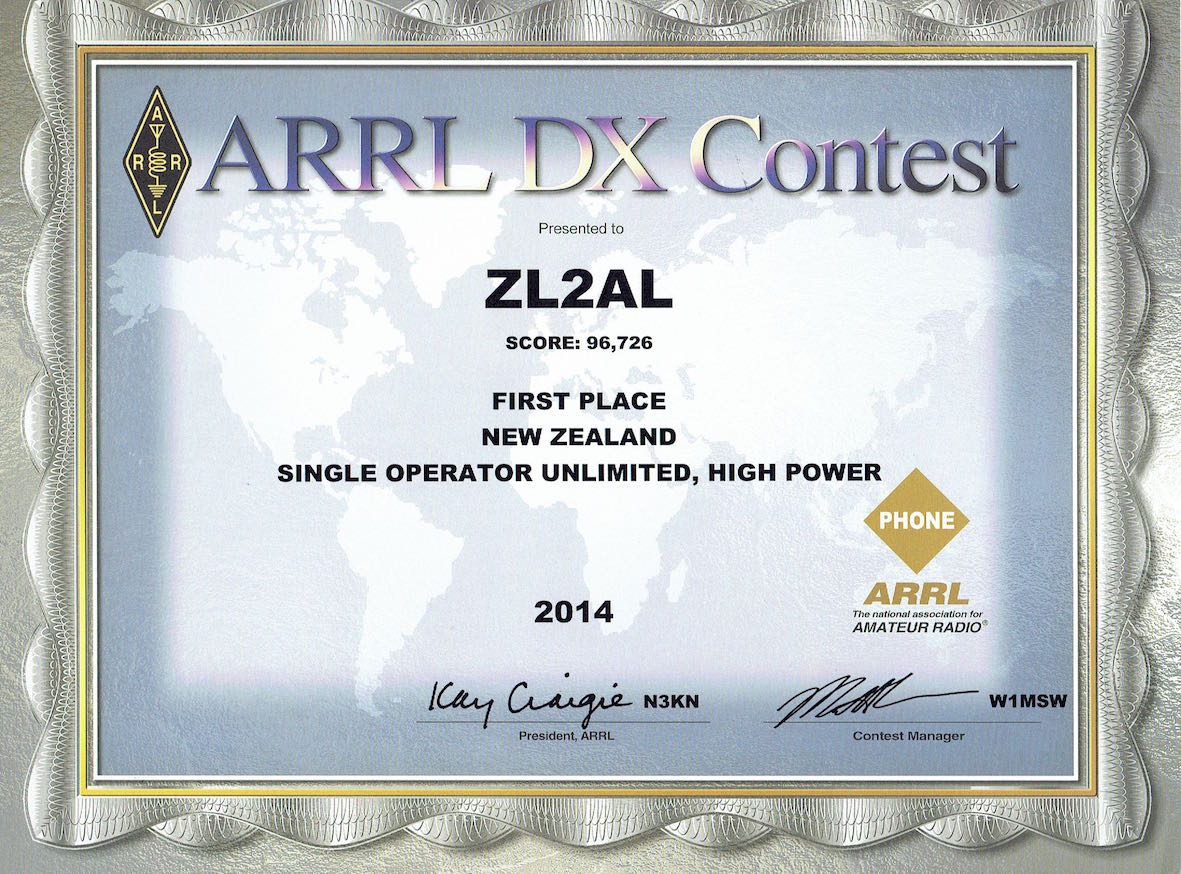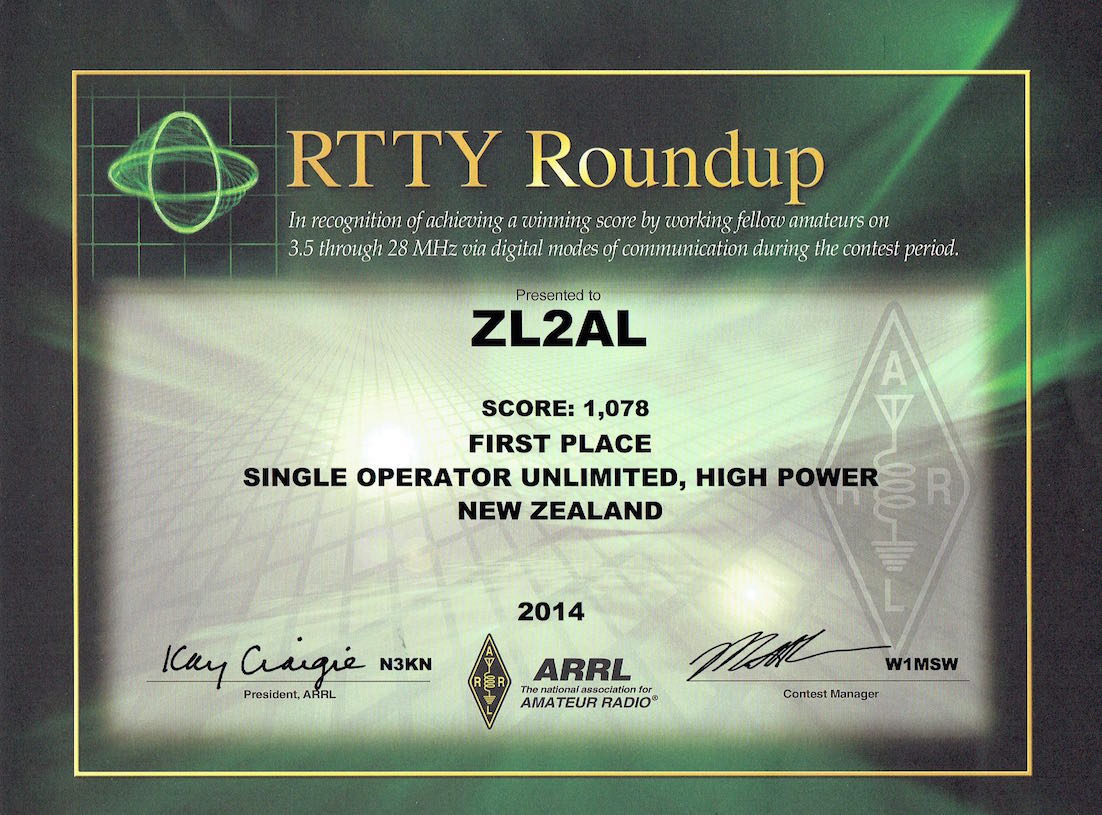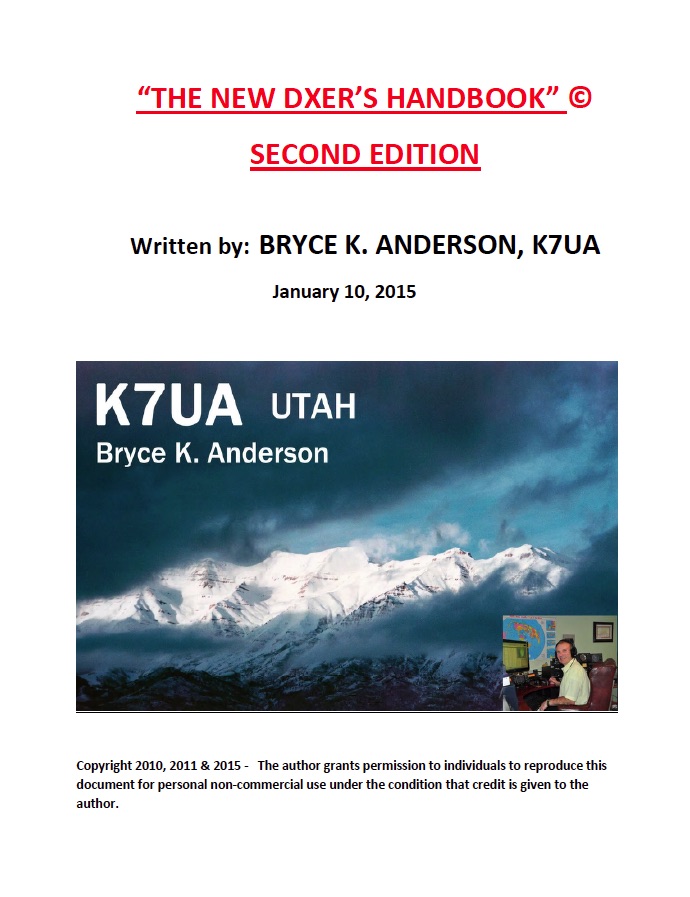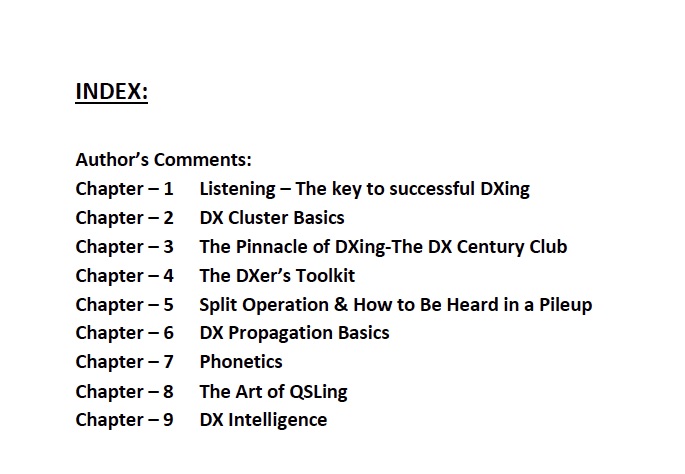Category Archives: Amateur Radio General
So You want To Go On A DXpedition?
Wise words from Paul N6PSE
The 2012 3D2C-Conway Reef DXpedition Team had a number of first time DXpeditioners.
I am often asked: What’s it take to get invited to join a Dxpedition? Or I am told “please keep me in mind for future trips”.
Participating in DXpeditions is one of the most enjoyable and interesting things I have ever done. The places that you see and the people that you meet are truly fascinating. You may discover as I have, that our world is truly different than our mass media and biased news reporting would have you believe.
Prior to my first Dxpedition to IRAQ, I always wondered why it was always the same guys on each team that activated these strange and interesting places. Soon, I learned that each team often builds a core part of the team. These team members are often retired or semi-retired and are able to travel with little notice. They also bring other skills to the team such as solid and reliable work ethic, a “can do” attitude, they are likely to be very strong operators and able to operate for long periods of time often under harsh conditions. They are often willing to operate in any mode, any time.
They bring a sense of excitement and adventure that adds to the excitement and passion of the team. Some guys are just hard workers. They know what needs to be done and they just get it done. These guys are the back bone of the team and their skills and knowledge are invaluable.
It is my opinion that each team should have some new talent or new people to introduce to Dxpeditioning. Dxpeditioning should not be an elitist function and the hobby benefits from finding and developing new players who can later go on and do more activations and eventually form and lead their own teams. This kind of activity can propel Dxpeditioning activity for decades to come.
When I am approached by a new comer who wants to join a Dxpedition, I gauge their interest and ability to fit in with a team. I find that sometimes future Dxpeditioners have a unrealistic expectation of what a Dxpedition is like. Those that expect comfort and convenience will bring unrealistic expectations to the table. Cost is a consideration for all of us. Today’s Dxpeditioner can expect to spend $250-$500 a day or more plus their cost to get to and from the Dxpedition meeting point.
When building the Dxpedition team, the leaders want to build a team that will be engaged and effective. They will tend to go to their core people first as these people are known for their skills and qualities. The leader knows that he must seek and maintain balance in the skills sets available.
I believe that multi-national teams are the most effective teams at meeting the huge global demand for contacts. For that reason, I prefer to build and assemble a team of US, EU, JA and South American members whenever possible.
I try to tap into the team members feeling of personal obligation to ensure that his own continent is well covered with contacts made. Never do you want to leave a continent feeling that they did not get access to the Dxpedition team.
Strong operating skills are very important to the Dxpedition team. An operator should be strong at CW and/or SSB. Willingness and ability to do multiple modes is a plus. RTTY should not be an afterthought and operators that bring skills such as rapid rate and expertise with multiple decoders are desirable.
Some operators bring extra skills to the team, such as the ability to effectively troubleshoot PC & network issues. Expertise in logging programs such as N1MM, Wintest and Writelog are quite desirable. Skills in gathering log data and performing satellite uploads are very beneficial.
We are often impressed by those that have the right attitude and the aptitude to succeed. Skills can be developed, honed and improved but they must be coupled with the right attitude along with the aptitude to succeed.
There have been countless times when I have been asked “Please keep me in mind for a future trip”. Quite often when I contact those people I find that they are dreamers and not really engaged in becoming a Dxpeditioner. They are not prepared to take the time away from their work and family or prepared for the cost of the Dxpedition. The men that say “yes” time and time again are able to live the dream and enjoy the fun.
So when you look at the various Dxpedition websites and see the makeup of the team, know that could be you going on the adventure, but only after you have aligned your expectations with those of the team and you have made your skills and abilities attractive to the team leader as he builds and assembles his team.
The future of Dxpeditioning needs new blood. If you wish to join the ranks of DXpeditioners start getting ready now so that you are prepared to say yes when that call comes.
What do you think?
From the N6PSE Website
Ohms Law – Very Funny!
Ham Radio Celebrities
Ham radio celebrities, a long list
On the 16th of August, Italian amateur radio operators commemorate the life of Francesco Cossiga, I0FCG, who passed away about a year ago. The deceased former President of the Republic of Italy was one of many people from institutions or from the world of culture and the arts, passionate about the world of ham radio, others who hold a license and the license itself. Some died, unfortunately, before FCG and therefore aren’t able to make their presence felt on the bands. Others, on the other hand, remain active and offer, from time to time, the opportunity for a QSO, never to be forgotten. In the paragraphs to follow, we will try to recall some of those who have passed on and offer a broad look at those still active,knowing full well that we will not succeed in being completely thorough. Know, in any case, that this topic has been addressed by various websites, while being constantly revised (i.e., The Original Famous Hams and Ex-hams List, edited by N2GJ and W2SG along with a group from Facebook).
 Among those silent keys, beyond question, King Hussein of Jordan was the most celebrated of ham operators, with the callsign JY1. His activity was frequent and documented, not only by those who have memories of being contacted by him, but by his QSL card, complete with a royal seal, safely kept and proudly displayed by many OMs. Similar to the case of the Jordanian ruler is that of Rajiv Ghandi, Indian Prime Minister who fell victim to the act of an assassin on 21 March 1991. His call was VU2RG (in use today by a radio club in his memory) and this page offers an autobiography and allows one to see, among other things, his QSL card and his license. It should also be pointed out that his wife, Italian Sonia Ghandi, was also his companion: VU2SON.
Among those silent keys, beyond question, King Hussein of Jordan was the most celebrated of ham operators, with the callsign JY1. His activity was frequent and documented, not only by those who have memories of being contacted by him, but by his QSL card, complete with a royal seal, safely kept and proudly displayed by many OMs. Similar to the case of the Jordanian ruler is that of Rajiv Ghandi, Indian Prime Minister who fell victim to the act of an assassin on 21 March 1991. His call was VU2RG (in use today by a radio club in his memory) and this page offers an autobiography and allows one to see, among other things, his QSL card and his license. It should also be pointed out that his wife, Italian Sonia Ghandi, was also his companion: VU2SON.
The list of statesmen who have warmed the airwaves would then necessarily include JI1KIT, Keizo Obuchi, the 84th Japanese Prime Minister, having died 14 May, 2000, at the age of 72. “It’s said that I am a person of ordinary means – he explains in an interview. I just want people to know that I am a man that does that which must be done.” A reflection that goes well beyond any political appraisal, but well with the spirit which should inspire a radio amateur.
 Now, turning to American politics, it’s impossible not to mention Barry Goldwater, who during the sixties ran for the White House. Licensed during the twenties, he had multiple callsigns, 6BPI, K3UIG and K7UGA. The last one is now in use by a radio club in Arizona in honor of his memory. His commitment and support of amateur radio was significant: during the years of the war in Vietnam, he came up with the first organizational plan for MARS (Military Affiliate Radio System), giving numerous soldiers the opportunity to speak with their families at home. Additionally, from 1969 right up to his death (in 1998 at 89), he appeared in numerous widely distributed videos through the ARRL. The first was “The World of Amateur Radio,” produced by Dave Bell (W6AQ) in which Goldwater gave a demonstration of a contact with Antarctica.
Now, turning to American politics, it’s impossible not to mention Barry Goldwater, who during the sixties ran for the White House. Licensed during the twenties, he had multiple callsigns, 6BPI, K3UIG and K7UGA. The last one is now in use by a radio club in Arizona in honor of his memory. His commitment and support of amateur radio was significant: during the years of the war in Vietnam, he came up with the first organizational plan for MARS (Military Affiliate Radio System), giving numerous soldiers the opportunity to speak with their families at home. Additionally, from 1969 right up to his death (in 1998 at 89), he appeared in numerous widely distributed videos through the ARRL. The first was “The World of Amateur Radio,” produced by Dave Bell (W6AQ) in which Goldwater gave a demonstration of a contact with Antarctica.
Moving on now to individuals in entertainment, is the emblematic figure of Marlon Brando. Not so well known outside of the amateur community is the fact is that the celebrated American actor is a two-time Oscar winner. Known by the pseudonym Martin Brandeaux (you’ll find all this on the pages of QRZ.com), having had two callsigns: one American, KE6PZH, and the other ticket for his private island in French Polynesia, FO5GJ. In 1994 in the celebrity interview conducted on Larry King Live, an icon of CNN with the unmistakeable red suspenders, the actor confirmed, among other things, his passion for radio.
The list, especially among Americans would be long. We want, in any event, to mention: W1AW, Hiram Percy Maxim (SK 1936, amateur radio pioneer and among the founders of the American Radio Relay League); Walter “Pee Wee” Hunt (died in 1979), respected jazz trombonist and vocalist; W1UHI, Earnest Wheatley (1993, honored with the title of “longest living American ham”, conferred at the age of 106); W1ZE, Irving Vermilya (1964, first OM licensed in the USA as documented in this article); W2ALS, Frank Gunther (1999, gave impetus to the unparalleled development of VHF, installing the first mobile radio network used by the police); K2GL, Hazard E. Reeves (1986 inventor of the stereophonic system in use by movie theatres); Walter Kronkite, KB2SGD, 2009 celebrity television correspondent from CBS Television; Winthrop M. Leeds (1998, inventor which patented some 100 inventions); Katashi Nose, KH6IJ (a name which still lights up the eyes of American DXers from the “old guard,” popular among contesters for his mastery of CW. His call is now assigned to his daughter Frances); and we certainly can’t forget Ambrogio Fogar, I2NSF, sole navigator /MM on board the “Surprise” (went missing in 2005); and VE2AHZ/VK2AHZ, Robert W. Lane, credited for being “the father of country music in Texas,” having died in 1983 at the age of 66, having composed and copyrighted some 300 songs.
 Above all, however, we can’t help but remember Polish Franciscan Maximilian Maria Kolbe. Beatified in 1971, he was proclaimed a saint by John Paul II in 1982 and is the patron saint of all radio amateurs throughout the world. He acquired a license in 1938 and was active for a few years with the call SP3RN. In 1941 he offered to take the place of the father of a family who had been ordered to the “starvation bunker” in the Auschwitz concentration camp, where he perished.
Above all, however, we can’t help but remember Polish Franciscan Maximilian Maria Kolbe. Beatified in 1971, he was proclaimed a saint by John Paul II in 1982 and is the patron saint of all radio amateurs throughout the world. He acquired a license in 1938 and was active for a few years with the call SP3RN. In 1941 he offered to take the place of the father of a family who had been ordered to the “starvation bunker” in the Auschwitz concentration camp, where he perished.
With the list of “celebrity hams” still active, it’s impossible not to mention EA0JC, King Juan Carlos of Spain (here’s his QSL, now managed by URE (Union of Radio Amateurs of Spain) for QSOs made by specially operated stations in towns visited by the King, as the sovereign himself has been silent since the death of JY1), and then move right on to HS1A, the King of Thailand, Bhumipol Adulayadej and his natural heir to the throne, Princess Maha Chakri Sirindhorn, HS1D. Carlos Saul Menem, President of the Republic of Argentina during the ten year period 1989-1999 has been known by the call LU1SM. Of course, you can’t miss checking out aconfirmed QSO with this distinguished colleague.
as the sovereign himself has been silent since the death of JY1), and then move right on to HS1A, the King of Thailand, Bhumipol Adulayadej and his natural heir to the throne, Princess Maha Chakri Sirindhorn, HS1D. Carlos Saul Menem, President of the Republic of Argentina during the ten year period 1989-1999 has been known by the call LU1SM. Of course, you can’t miss checking out aconfirmed QSO with this distinguished colleague.
There are also many sovereigns in the Middle East with a passion for ham radio.Here’s the biography of 9K2CS, Prince Yousuf al Sabah of Kuwait. From the Kingdom of Saudi Arabia, you may occasionally hear HZ1TA, Prince Talal bin Abdul Aziz al Saud; and HZ1TC, Prince Al Waleed bin Talal, nephew of King Abdullah. And moving on to representatives of the entertainment world, perhaps many do not know that Goran Bregovic was an amateur operator with the call YU4ZU, which, however, is now expired. Still active, on the other hand, is GO0AN, Feargal Sharkey, who found fame as the lead vocalist from the pop punk band “The Undertones.” And let us not forget to mention Eagle band member Joe Walsh, WB6ACU, who is not only known for his legacy with the Eagles, but is well known to many hams through his association with Bob Heil, K9EID of Heil Sound. In Italy there’s a ham radio threesome known as “La Scala.” They are Carlo Camerini, I2CUK, Director of the Palcoscenico of the celebrated milanese theatre, baritone Domenico Giglietti, I2DMH and I2LHZ, celloist.
We conclude with two stories which bring to light, once again, how much ham radio can be helpful in certain situations and have earned the nickname from their admirers, “radio celebrities.” In chronological order, the first, described in detail in this article from the BBC, showing Scottish publicist Les Hamilton, GM3ITN, as he advised England of the invasion of the Falklands by Argentina. In the second, on the other hand, 9K2DZ, Abdul Jabbar Marafie, in August 1990, maintained contact with the rest of the world from Kuwait, having been invaded by the Iraqis, heroic work for which he received the “Humanitarian Award” from the ARRL in 1992.
With numbers being increasingly supportive of the bands, along with their full agendas, it’s not easy to connect with one of these OMs. And however peculiar the callsign, you never know who may respond when calling CQ…
Acknowledgement: This list appeared in DX Coffee about 4 years ago and was
Translated by Mark Kelley, W0BG.
Chuck Brady N4BQW
I worked Chuck Brady N4BQW many times over the years and after I worked him on 3Y0 Bouvet, I was delighted to receive his signed photo of him and the STS-78 Shuttle team of which he was a crew member. Sadly, Chuck became an SK a few years later. Very sad for such a young fit man! Click on photo to resize larger. Photos below
73, Lee ZL2AL
Contesting 2014
I have always enjoyed operating amateur radio contests.
The primary reason of course is that there is a chance one can work a new country on a new band. And the second reason is that all the scores from past years are available online and you can see what you must do to set a new record and see your score posted. It’s all a bit of a fun game because as soon as you set a new record there is always somebody in your area that wants to knock you off. Scores increase every year because to technology, equipment and skills continue to get better each year.
Over the past 8 years I was part of the ZM4T Contest team of 8 enthusiastic contesters. We won many certificates and plaques from our superb location about 30 Km north of Napier up in the hills with sweeping views in all directions during the time we were in operation. You can catch up with the adventures of the East Coast Contesters at www.zm4t.com We were all getting older and some members gave built their own contest stations. Our last major operation was in 2013.
2014 was the first year with no contest team so I decided to do a few of the major contests from my home station. It is hard going as I don’t have the location or big antennas but the added bonus is the urban noise which is a pain. Strangely, 2014 has been quite successful and I am surprised some of the certificates below have come my way
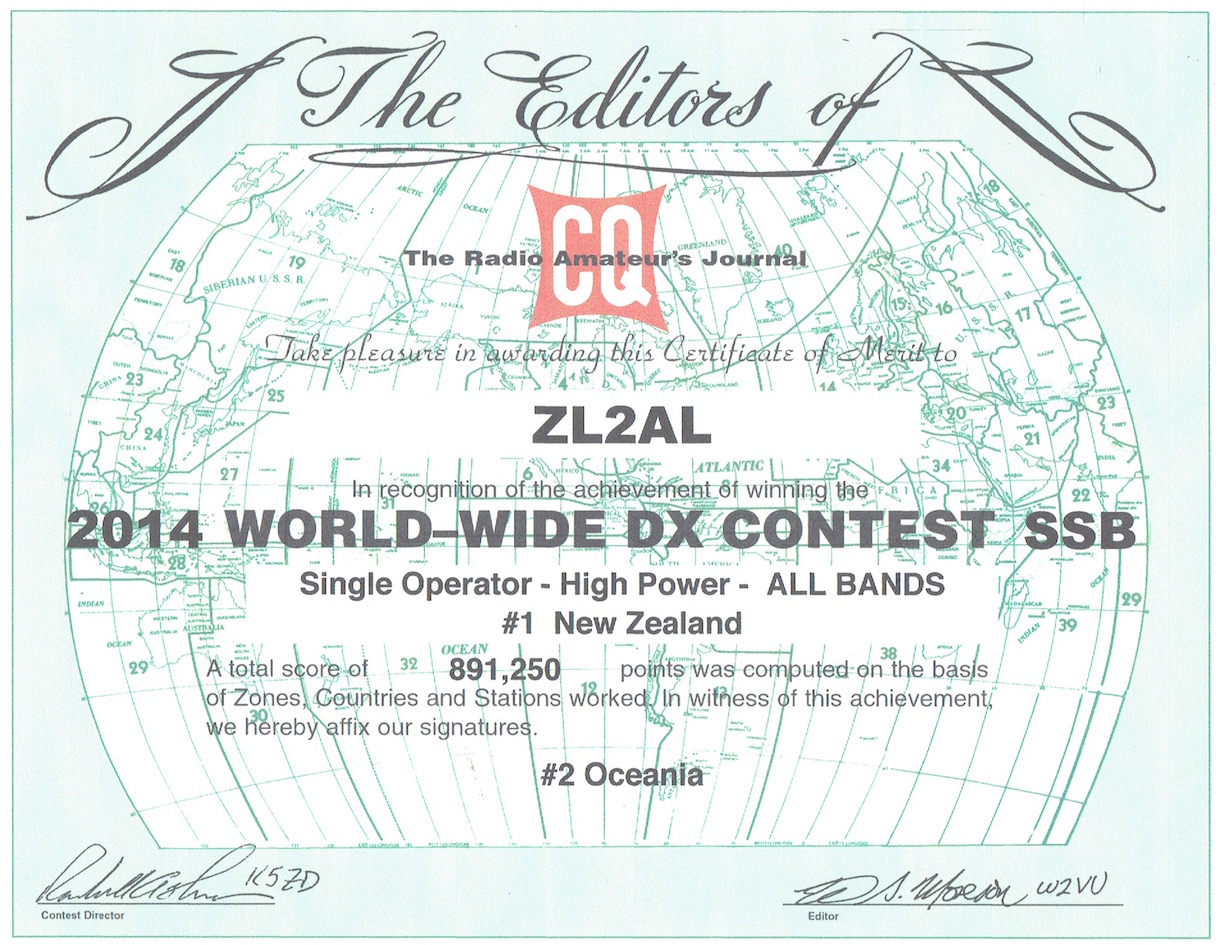
The biggest Contest in world. The CQWW sets the standard with over 7,000 entries every October from every country in the world.
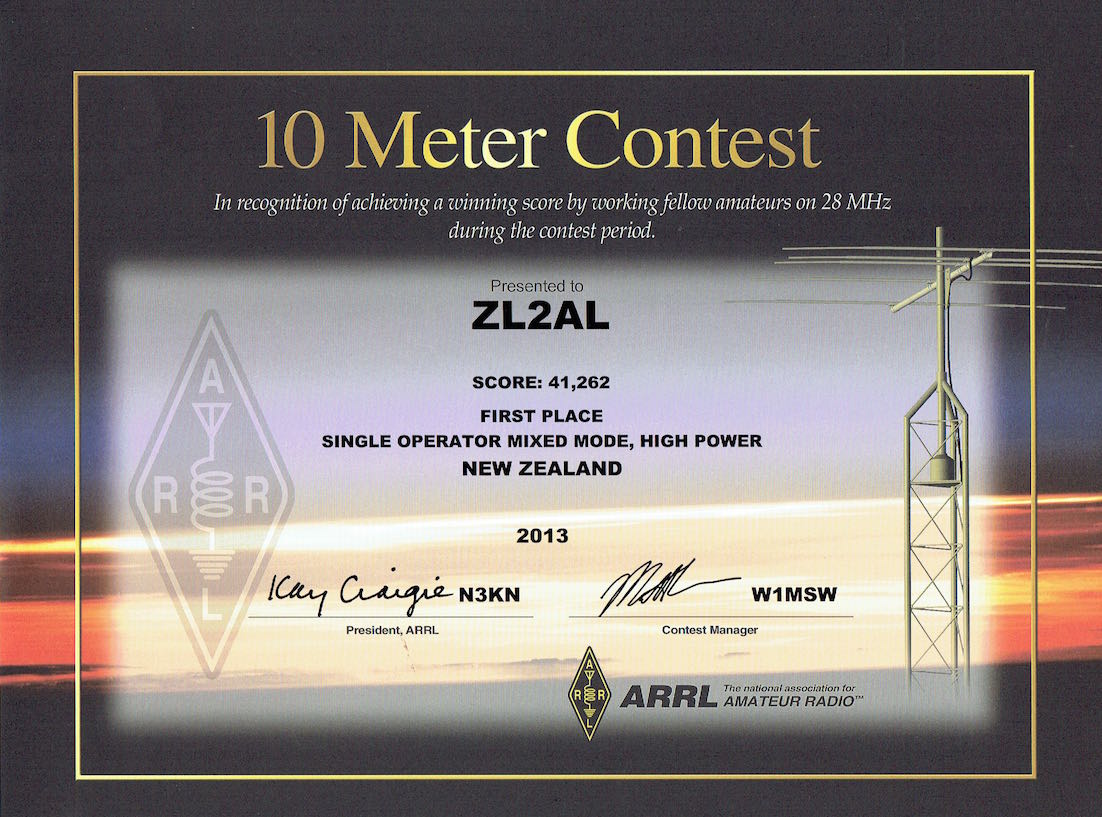
The ARRL 10M Contest is for single band operation and is very popular during the years when the Solar sunspot activity is high
Why do amateurs Contest? Aside from the competition of knowing where you station rank there is a lot of satisfaction doing a contest well. For me it the buzz of getting in the “Zone” The on screen contesting software has has various windows to tell you how well you are doing as and operator. Sometimes, when radio conditions are very good there will be 50 or even a hundred other stations calling you and you have to sort their callsigns out and type them into the computer very accurately. After a while you get lost in the zone and the windows indicate you are working 150 – 200 or more per hour and what a buzz it is.
CW (Morse code) contests are actual easier to do then microphone based voice contests as CW is so precise to listen to. There are penalties for getting callsigns or other exchange wrong. After the contest, you must forward your log of sometimes 1000 plus contacts to the contest organizers and your data is checked by computers against other submitted logs from around the world. If you get it wrong, the contacts are disallowed and worse still, they are deducted from your score. An error rate of below 3% is considered very good! I have been in one contest this year (2015) and hope to do a few more.
73, Lee ZL2AL
ZL Amateur Radio Milestones
Updated: 15 Feb 2015
This is a chronology of how radio and later Amateur Radio developed in New Zealand. It was compiled byt NZART and is on their website NZART Website
1888
George Kemp begins wireless experiments in Gisborne.
1899
John Cooper demonstrates wireless telegraphy at Canterbury University.
1902
James Logan sends Morse code messages across Wellington Harbour. W. P. Huggins in Timaru and Joe Passmore in Dunedin also send messages over short distances.
1903
Establishing an amateur radio station without official permission is banned.
1908
Amateur stations in Dunedin send the first official wireless messages.
1909
Amateurs operating illegally are deemed to have interfered with naval communications.
1911
All outside antennae are banned.
1912
First reported use of amateur radio in an emergency occurs when a ship is in distress at the entrance to Wellington Harbour and amateurs operating pick up a distress call.
1914
All amateur activity is completely banned during wartime. Some amateurs continue to operate illegally.
1921
Provisional receive-only permits are issued.
1922
Ralph Slade becomes the first New Zealand amateur to receive USA amateurs (5 November).
Special telephony permits are issued and wireless telephony is used legally for the first time.
1923
Regulations for Amateur, Experimental and Broadcasting Stations are gazetted (18 January). The minimum age for holding an amateur radio licence is set at 14. Maximum power is 50 watts.
First amateur radio contact with Australia between Frank Bell at Shag Valley in Otago (using the call sign BELL) and Charlie Maclurcan 2CM in Sydney, on 160 metres (26 April).
Frank Bell 4AA in Shag Valley and Dan Wilkinson 2AB in Motueka become the first licensed amateurs (7-8 June). 40 licences are issued by the end of the year.
1924
New Zealand is allocated the call sign prefix Z.
Ivan O’Meara Z2AC in Gisborne and Carlos Braggio RCB8 in Buenos Aires make the first NZ-South America contact and set a world distance record (22 May).
Frank Bell Z4AA at Shag Valley and Wallace Magner 6BCP in San Pedro make the first NZ-North America contact (21 September).
First round-the-world two way radio contact held between Frank Bell Z4AA at Shag Valley and Cecil Goyder G2SZ in London on 92 metres (18 October).
1925
A single license replaces the previous two grades. Maximum power is now 100 watts. The number of licences issued reaches 100.
Representatives from twenty-three countries meet in Paris to form the International Amateur Radio Union (18 April). Frank Bell Z4AA is elected as a member of the Executive Committee.
1926
The New Zealand Association of Radio Transmitters (NZART) is formed in Auckland (16 August). Annual subscription fee is set at five shillings (50 cents).
Joe Johnson Z2GA obtains the first portable licence.
Gordon Smithson Z1AF makes the first NZART Official Broadcast.
1927
The International Telecommunication Union (ITU) Conference in Washington establishes internationally-agreed frequency bands. NZ is allocated the prefix OZ.
The Sangster Shield contest for low power operation starts.
1928
The first issue of ‘Break-In’ is published (January) and provided free to NZART members.
First crystal-controlled transmitter is built and operated by Gordon Brown OZ4AE and Arnold Grubb OZ4AL.
The first overseas 10 metre contact is conducted between Hilton Arthur OZ1AN and OA3CP in Melbourne (23 September).
1929
Provisions of the Washington Radio Telegraphic Convention of 1927 come into force restricting the frequencies available to amateurs.
NZART is admitted to International Amateur Radio Union (IARU).
NZ is allocated the prefixes ZK to ZM. It opts for ZL for mainland stations.
The NZART QSL Bureau is established.
NZART negotiates a reduction in licence fee from £2/2/- to £1/10/- ($3).
1930
World record 10m contact held between Norm Edwards ZL1AA and F8AW in France.
Myrt Earland ZL3AG becomes the first woman licensed (YL) operator.
1931
Hawke’s Bay Earthquake occurs (3 February) and it becomes the genesis of the formation of the Radio Emergency Corps (later AREC).
1932
The Radio Regulations are gazetted. The Morse test is increased to 12 wpm. All amateurs are allowed to use the 160m and 80m bands.
Radio Emergency Corps is formed (6 March). The first national REC field-day is held.
1933
NZART log book is made available at 1/6d (15 cents).
Official broadcasts are resumed at 15 wpm.
1934
First contact between aircraft and a ground station is established by “Casey” Harris ZL4CA and Ray McConnell ZL4BV in Otago, on 5 metres (60 MHz).
NZART becomes an Incorporated Society.
1935
The first NZART Call Book is published.
TV experiments are authorised on the 5m band and below 1m.
Norm Laugesen becomes the first NZART Honorary Life Member.
The VK/ZL/OC contest is started.
1936
The number of amateurs reaches 1000.
1938
Dave Brown ZL1HY is the first ZL to be awarded the DXCC.
The first TV article is published in Break-In.
1939
Amateur radio activity is banned for the duration of World War II. Amateur equipment is used in war effort. Amateurs serve as wartime radio operators.
Break-In published is in cyclostyled form throughout WWII (1939-1945).
1945
Wartime ban on amateur radio is lifted (“H-Night” 8 December). Amateur operations resumes on 3.5 to 3.96 MHz and 58.5 to 60 MHz only.
Morse test is increased to 15 wpm for HF permit holders.
1946
Further pre-war bands are released and overseas contacts resume. 50 to 54 MHz made available for use.
The Memorial Contest starts.
ZC1 army surplus transmitter/receivers are sold for 20 pounds ($40).
NZART Official Broadcasts recommenced by Doug Gorman ZL2IY.
1948
First article on SSB (nee SSSC) is published in Break-In.
First contacts on 2400 MHz conducted by Bill Collett ZL4BP and Jeff Walker ZL4DH.
Worked All Pacific and Worked All Branches awards are introduced.
1949
The Maori language is allowed on air in addition to English.
REC is re-named Amateur Radio Emergency Corps (AREC).
144 to 148 MHz is made available for use.
World record 50 MHz contact held between Maurice Wills ZL4GY and K6BF.
1951
World record 144 MHz contact over 1340 miles held between Dave Buchanan ZL3AR and VK2AH.
1952
National Field day and Frequency Measuring Contests start.
First SSB contacts held between Jack Mason ZL1QS and Maurie Walker ZL1AU.
21.0 to 21.45 MHz is made available for use.
1953
Old Timers’ Club is formed (31 May).
Minimum age to obtain an amateur licence is increased to 16.
New Zealand reportedly has more amateurs per capita than any other country.
1954
First two-way contact on 10 GHz held between Jack King ZL2AKP and Ron Morgan ZL2GQ.
First transistor article appears in Break-In.
Roy Pottinger ZL4GP makes the first transistor transmitter contact in and sets a world distance record transistorised contact with a Christchurch amateur.
1956
First two-way RTTY contact held between NZ and USA, by ZL1WB and WØBP.
1958
On-air demonstration of 405-line TV on 420 MHz conducted by ZL2APC.
First Boy Scout Jamboree on the Air (JOTA) held.
1959
50 to 51 MHz withdrawn for amateur use to allow use by commercial TV.
First NZ-GB RTTY contact held between Alec Hyndman ZL3HJ and G3CQE.
1960
Jock White ZL2GX achieves the world’s first DXCC300.
1961
OSCAR-1 (Orbital Satellite Carrying Amateur Radio) is launched (14 December). Trevor Kendrick ZL2HP is the first NZ amateur to hear it.
1962
Women Amateur Radio Operators’ club (WARO) is formed.
Maximum power limit is raised from 100 watts to 150 watts final anode input.
Minimum age for amateur licence is returned to 14.
1963
Doug Gorman ZL2IY is awarded an MBE in the Queen’s Birthday Honours for services to Amateur Radio and to Search and Rescue.
A non-Morse Technician licence grade is introduced for operation above 144 MHz.
1964
First hand-held 2metre band solid-state transceiver is demonstrated by Harry Burton ZL2APC.
1965
First all-electronic scanning receiver demonstrated by Harry Burton ZL2APC.
1966
Integrated circuits are first mentioned in Break-In.
1967
The establishment of beacons on 144, 432 and 1215 MHz is approved.
The use of slow-scan TV on HF bands is approved.
The Reciprocal Licensing Scheme starts.
1968
NZART attends the foundation meeting of IARU Region 3 Association in Sydney.
1969
ZM prefix is permitted for first time to celebrate the Cook’s Bi-centenary.
World record 144 MHz moon-bounce (EME) contact held between John Morgan ZL1AZR and Kjell Rasmusson SM7BAE.
Bruce Rowlings ZL1WB is appointed command station for OSCARs 5, 6 and 7.
1970
New Radio Regulations are introduced, with Grades I, II and III replacing the former two grades and the HF permit system.
Christchurch amateurs commission the first amateur beacon and the first VHF repeater.
1971
Roy Needham ZL1KG is the first amateur outside USA to receive the US Counties Award.
1972
All grades of operators are allowed to work through OSCAR-6 and subsequent satellites.
1973
Morse speed test is reduced to 12 wpm.
1974
ZM prefix permitted for use during the Commonwealth Games, Christchurch.
First full-colour ATV test-pattern transmitted by Doug Ingham ZL2TAR.
1975
Wellington VHF Group set a 3300 MHz world record contact between Mt Murchison and Mt Ruapehu.
1976
Golden Jubilee of NZART is celebrated with Sir William Pickering as guest speaker.
Use of 1803 to 1813 kHz is authorised.
First full-colour cover for Break-In is published.
1977
Novice grade licence is introduced.
1978
40 metre band is extended to 7.3 MHz on a non-interference basis.
The first ATV repeater is operational at Wellington.
First two-way contact on 24 GHz is conducted by Peter Williams ZL2ARW and John Yaldwyn ZL2TRV.
1979
The term of office for NZART President and Council is extended to 2 years.
50 to 50.15 MHz is introduced for use as a shared-use arrangement.
First 432 MHz E-M-E contact held with USA by ZL2BCG and K5JL.
Jim Jackson ZL2BCG and Graham Alderson ZL3AAD set the 432 MHz EME world record when contacting I5MSH.
The Tasman Sea is first crossed on 432 MHz by ZL1TAB and VK2BQJ.
Chuck Rademacher ZL1ADI wins the IARU Radiosport Championship.
1980
World record EME contact held between Graham Alderson ZL3AAD and DL9KR on 432 MHz.
Frequency Management Working Group established.
Call signs are now retained when amateurs move between radio districts.
1981
First ZL-European 50 MHz SSB contact held by ZL1MQ and ZB0T sets a new world record (18,250 km).
144 MHz bandplan changes from 700 kHz to 600 kHz offset for FM repeaters.
First 2m linear repeater established in Dunedin.
1982
NZART membership peaks at 4397.
NZART Headquarters opens in Astral Towers, Upper Hutt.
10.1 MHz band is made available fir use.
Grade 3 operators are permitted to use the 51 to 53 MHz band.
Tasman Sea crossed on 1296 MHz by ZL1AVZ and VK2BDN.
1983
World Communications Year, with ZM prefix able to be used.
Tom Clarkson ZL2AZ receives MBE in Birthday Honours List for services to Amateur Radio.
New Frequency Allocation List gives an extended band at 1.8 MHz, new bands above 47 GHz, and Grade 2 and Novice use on 28 MHz.
Band-plans are transferred to the Amateur Service to self-regulate.
Packet radio first used in New Zealand by ZL1AOX, ZL1WN and ZL1UFK.
World record 28 MHz packet radio contact held between Ian Ashley ZL1AOX and Tom Clark W3IWI.
World record 1296 MHz EME contact held between Graham Alderson ZL3AAD and Jan Ottens PAÆSSB.
First 610 MHz contact held by ZL2AQF and ZL2ARW (3 December) between Mt. Kaukau and Kakanui.
1984
Review of the Amateur Service completed by NZ Post Office.
Morse transmission is authorised for use by Grade 3 operators.
QSL Bureau becomes a free service to NZART members, non-members continue to pay 10 cents a card.
Chatham, Kermadec, and Auckland/Campbell Islands became ZL7, ZL8, and ZL9 respectively.
First radio operation from the top of Mt. Cook conducted by Robin McNeill ZL3TIG.
1985
18.068 MHz band is made available for use.
Sixth IARU Region III Association Conference held at Auckland, hosted by NZART, with visits by the IARU President and the ITU General-Secretary.
Bob Knowles ZL1BAD is appointed IARU International Intruder Watch Coordinator.
Ian Ashley ZL1AOX appointed command station for OSCAR 10 and OSCAR 13.
1986
NZART’s Diamond Jubilee year. Annual Conference at New Plymouth is opened by Governor-General Sir Paul Reeves.
NZART Official Broadcast is simulcasted by Jim Meachen ZL2BHF on 3900 kHz and on Amateur TV for the first time.
Amendment to Radio Regulations establishes new General, Limited, and Novice Licence grades. Power measurements are changed to mean/PEP output power rating. Logbook is not now obligatory but recommended.
First six-metre packet radio contact to VK held by ZL2BKC and VK2YME.
1987
Amateurs are allowed to choose any vacant call sign.
New Zealand Post Office replaced by the New Zealand Radio Frequency Service as the NZ administration.
24.89 to 24.99 MHz band made available. 610-620 MHz band extended to 622 MHz.
National Link repeater system Wellington-Auckland is opened.
Official broadcast first networked on VHF repeaters.
World record 2304 MHz E-M-E contact held between John Shorland ZL2AQE and Tom Clark W3IWI.
Guy Kendall ZL2BIV becomes the first amateur to communicate from an airborne hang-glider, and depicted on the 1987 Callbook.
Tom Clarkson ZL2AZ receives the IARU Region 1 Roy Stevens Memorial Trophy.
1988
New Radio Regulations are created. The 14-year age limit for Amateur Licence is abolished. Amateurs are allowed to handle third-party messages within New Zealand. Non-amateurs are allowed to speak on air.
World record 50 MHz E-M-E contact held between Graham Jonas ZL2BGJ and Ray Rector WA4NJP.
1989
ZM prefix permitted for use for XIV Commonwealth Games in Auckland.
Dan Wilkinson ZL2AB receives QSM in Birthday Honours List for services to Amateur Radio.
1990
NZART Examination Division is established and runs amateur radio written examinations for the first time.
ZM prefix permitted for use for New Zealand’s 150th Year Celebrations.
Novice Grade operators granted access to the 144-148 MHz band.
Access to all HF bands is made immediate on gaining a General Grade licence.
1991
Provisions introduced for visiting operators from countries having no formal reciprocal agreement with New Zealand to operate here.
1992
Ron Kingston ZL4MK is awarded QSM for services to Search and Rescue and to Civil Defence.
Dave Brown ZL1HY becomes the world’s top DXer, having contacted all 323 countries on current DXCC list and 375 out of 377 on the all-time list.
1993
NZART runs Morse testing for the amateur radio qualification for the first time at Conference at Pukekohe.
New Zealand General and Limited licences are recognised by CEPT (European Conference of Postal and Telecommunications Administrations), the first non-European country so recognised.
1994
The number of amateur radio licences peaks at 6613.
Society For The Preservation Of Amplitude Modulation (SPAM-NZ) holds its first annual general meeting held in New Plymouth.
New Zealand amateurs compete at ARDF World Championships in Sweden.
Fred Johnson ZL2AMJ is appointed as Chairman of Directors, IARU Region 3.
1996
Raoul Island Dxpedition, ZL8RI, organised from New Zealand by Ken ZL4HU and Lee ZL2AL.
NZART web page established by Jamie Pye ZL2NN and Steve Davis ZL2UCX.
1997
AREC re-named Amateur Radio Emergency Communications.
Rebecca Butcher ZL3URB becomes the youngest licensed amateur, aged 8.
World record 10 GHz EME contact held between Greg Storz ZL1GSG and Joe Fehrenbach DJ7FG.
NZART publishes the NZ amateur radio history book “Ham Shacks, Brass Pounders & Rag Chewers”.
1998
NZART Radio-science Education Trust is established.
1999
The size of NZART Council is reduced from 17 to 9 Councillors.
Break-In changed from eleven issues per year to six per year.
Campbell Island DXpedition, ZL9CI, organised from New Zealand by Ken ZL4HU, makes a world record of 96,004 contacts.
2000
Amateur Radio examinations ‘by-appointment’ commence using computer-selected public-domain questions developed by ZL1AN.
Study Guide for examination preparation written by ZL2AMJ is made available.
ZM prefix is permitted for the Millennium celebrations.
2001
NZART celebrates its 75th Anniversary Year.
Headquarters Info-Line commences with Editor Jim Meachen ZL2BHF.
New 50 MHz world record contact held by ZL3VTV/1 and EH7KW.
NZART 75th Anniversary Conference held at Auckland, with Lester Earnshaw (ex-ZL1AAX) as guest speaker.
New Radio-communications Regulations are issued. Novice grade is removed and 5 words-per-minute Morse speed introduced for the General grade licence.
Amateur Frequency Allocation Chart is reviewed and the spectrum limit extended from 400 GHz to 1000GHz.
2002
AREC receives the inaugural National Search and Rescue Award.
First trans-Tasman 2-metre band contact by meteor scatter propagation is conducted by Bob McQuarrie ZL3TY Greymouth and Rex Moncur VK7MO Hobart (1950 km).
Fred Johnson ZL2AMJ awarded MNZM for services to Amateur Radio.
2003
The MED Radio Spectrum Management group introduces direct on-line access to its licensing database.
Two-way 80 metre SSB mobile-to-mobile QSO held between UK and NZ between G0DKM/m at Weston-super-mare UK and Winton Bell ZL3AO/m at Christchurch, with both vehicles moving.
2004
A two-way contact on 137.70 kHz on sets a world LF distance record between ZM2E Quartz Hill (operators ZL2CA and ZL2BBJ) with UA0LE (10,311 km).
Amendments to the New Zealand Radio Regulations arising from the WRC-2003 bring extensive changes. There is now only one grade of licence with all Limited Licensees becoming General Licensees. Competency in Morse code is no longer mandatory for any NZ licence.
NZART Headquarters opens its new office at 19 Main Street, Upper Hutt.
2005
World record 50 MHz EME contact held between Rod MacIntosh ZL3NW and M0BCG, an equivalent earth distance via the moon of 19,001 km.
New annual licence fee provisions came into effect (1 July). Amateur operators will no longer pay an annual fee.
World record 144 MHz EME contact, between ZL1IU and EA5SE, an equivalent earth distance via the moon of 19,453 km.
2006
World record 50 MHz EME contact, between Rod MacIntosh ZL3NW and F6FHP, an equivalent earth distance via the moon of 19,441 km.
The General User Radio Licence for Amateur Radio Operators (GURL) commences (1 July). It provides for a ZL/ZM call sign prefix facility with ZM use decided by individual operators for contests and for special events.
RSM authorises the use of the ZK prefix by AREC stations (3 September).
The new on-line issuing of amateur operator’s “Certificate of Competency” commences.
2007
NZART email lists and reflectors becomes a members-only service.
2008
All NZART-sponsored internet reflectors are closed indefinitely.
2009
First two-way digital TV contact on 23cm held between Grant Taylor ZL1WTT and Ralph Sanson ZL2TV, over a 33km path from Whangaporoa Peninsula to Pakuranga.
Fourteenth IARU Region 3 Association Conference held at Christchurch, hosted by NZART (October).
2010
Access approved on a temporary non-interference basis to the band 505 to 515 kHz for New Zealand radio amateurs (1 March).
First two-way voice EME contact held between Ralph Sanson ZM2TV and VK3NX on 5760 MHz SSB.
Callbook issued on CD in addition to the printed version.
2011
AREC provides more than 8000 man-hours of emergency communications after the 22 February Christchurch earthquake.
ZM prefixes are encouraged to be used during the Rugby World Cup.
Tasman Sea crossed on 2403 MHz, Brian Ryall ZL1AVZ to VK4OX and VK4JMC, and Stephen Hayman ZL1TPH to VK4OX.
2012
The first NZ Amateur Radio Day is promoted (10 March).
ZL#E, ZL#X and ZL#Y call signs released for amateur allocation.
Permitted power output is increased to 1000 watts PEP (30 November).
2013
Channel 39 ATV is closed to amateurs for use by digital TV. 50 to 51 MHz is made available as a result of the closure of Channel 1 analogue television. 472 to 479 KHz band is allocated to amateurs (6 December).
NZART Council meetings began to be held on Skype.
2014
ZKnE call signs released for AREC use.
John Walker ZL3IB steps down after 18 years as Editor of Break-in.
Barry Steward ZL2RR became silent key after serving 24 years as QSL Manager.
Please notify any errors, ideas or suggestions to Craig Crawford ZL3TLB at [email protected] Last Updated: January 2015
DXpeditioner KK6EK Visits Napier
Bob Schmieder has been a renown DXer since 1962, and holds Extra Class license KK6EK. He is the founder and Expedition Leader of Cordell Expeditions, a nonprofit research group begun in 1977. The group is responsible for the creation of the Cordell Bank National Marine Sanctuary and for numerous research expeditions to remote oceanic sites. Professionally he is a research physicist, with about 100 publications and four patents. He is the founder of NanoLogic Inc.
He is a Fellow of the Explorers Club and former Chairman of its Northern California Chapter. He is probably most famous for putting together the VK0IR Dxpedition to Heard Island back in 1997 and many other first class operations from rare places around the world. He has developed new technology for DXpeditions and Dxers and is the inventor (for XRØY/Z) of the online log server and DXA, the real-time log website (for K7C). Bob is
In over 30 years he has been listed in almost every Who’s Who in the world. He is the owner and operator of a research vessel, the Cordell Explorer and CQ Amateur Radio Hall of Fame member.
Bob is in New Zealand for a bit of a look around tour. It has been his ambition to see our country for a long time and Jackie, ZL3CW is his host and has been showing him the sights. Jackie and Bob caught up with Gary ZL2IFB and Lee ZL2AL at the “Duke” pub in Taradale Napier for a social get-together and a few drinks on February 6. Bob explained his latest venture in which he will return to Heard Island (VK0) next November/December with a team of approximately ops to put Heard back on the air again. At least 10 ops have signed on and ready to go but Bob is still looking for a few more to join the team. You can contact him at [email protected] for further info. It has been years since the last operation and this rare DXCC entity, currently #2 on everyones most wanted list will be available again. The cost will be horrendous but plans are well advanced and it will happen.
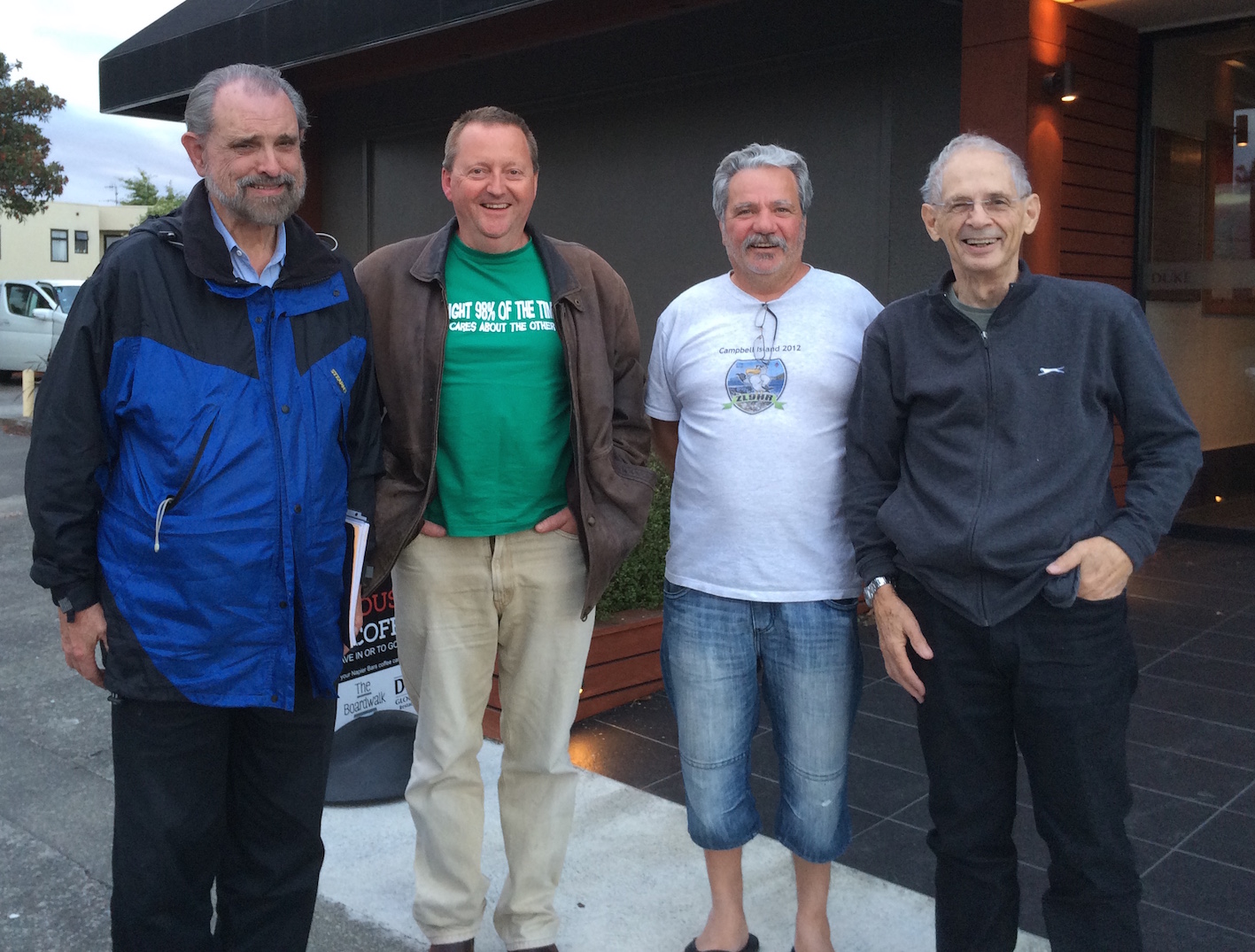
Left to Right: Bob KK6EK, Gary ZL2IFB, Jackie ZL3CW/F2CW and Lee ZL2AL. Thanks to Gary’s good lady Deborah for joining us and taking the photo.
Nice to see DXers hard at work! Bob leaves for Martinborough tomorrow and will visit Chris ZL2DX and other hams in further south.
Nice to meet you mate. Good luck with your planning of this most interesting Dxpedition.
73, Lee ZL2AL
Tube VS Pipe
Tube VS Pipe In the manufacturing industry one often hear terms such as pipes or tubing. To those working in this industry it is often not clear what the difference is between a pipe and a tube. After all they’re both just hollow cylinders, so many people think that the word has the exact same meaning. That is however wrong. There are a couple of key differences between tubes and pipes:
1. A pipe is a vessel – a tube is structural
2. A pipe is measured ID – a tube is measured ODA hollow cylinder has 3 important dimensions which are: The outside diameter (OD)The inside diameter (ID)The wall thickness (WT) These three are related by a very simple equation: OD = ID + 2 * WT
3. One can completely specify a piece of pipe/tube by supplying any two of these numbers
From the Jan/Feb issue of Branch 68 NZART “Ragchew” Newsletter
K7UA DXers Handbook
Bryce, K7UA has just revised his original handbook, This is a “No Nonsense” straight forward manual on all things DXing and how to go about working DX.
Free Download here: K7UA DXers Handbook
His methods, ideas and tips are invaluable if you want to achieve more than what you may be doing now. Bryce has been there and done that with most of the top awards and has worked 340 DXCC Entities. His wealth of experience is invaluable to both new and seasoned DXers. The Index of topics is below:
His handbook is absolutely free to download here K7UA DXers Handbook – 2nd Edition and is well worth reading.
73, Lee ZL2AL

